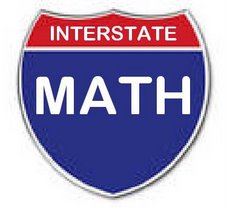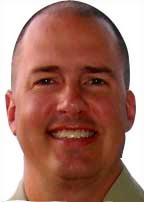Article from the Baltimore Sun
Can less equal more?
Proposal to teach math students fewer concepts in greater depth has divided Md. educators
By Liz Bowie
Sun Reporter
January 2, 2007
Teacher Jennifer Dial Santoro asked her eighth-grade geometry class to throw the formula out the window and instead try to reason out the area of shapes drawn on a large grid.
Didma Valenzuela, a girl in the front with her head down, struggled with a parallelogram. Then the class was given a shape that looked like an Egyptian sphinx. Didma figured that she could fill up the space inside the shape with triangles and rectangles and use them to find the area.
"Yes!" she said, slapping Santoro's hand. "And I did it all by myself."
The class in Anne Arundel County's Marley Middle School represents to Santoro the best kind of teaching: students learning to understand the abstract thinking behind math rules and formulas. Too much of the time, Santoro believes, math teachers are flying over material, never giving students a deep grasp of the subject.
It is a complaint that has echoed across the nation. But what is taught in math classrooms in Maryland could be on the verge of changing. In the next several months, math educators here will decide whether they want to slim down the curriculum, focusing on a deeper understanding of a few basic tenets and excluding some of the extraneous material that teachers such as Santoro feel is hindering instruction.
Maryland's soul-searching, and that of more than a dozen states across the country, is the result of a report by a well-regarded group of math educators, the National Council of Teachers of Math. The council released a grade-by-grade list of three essential concepts - just three per year - that each student should learn in kindergarten through eighth grade.
Council President Francis "Skip" Fennell said the organization wanted to address the long-held criticism that America's math curriculum is a mile wide and an inch deep. He hopes that states will change their standards to be more in line with the council's Focal Points report.
"The report is driving those kind of discussions. Already we have spoken to about 12 to 15 states that are doing that," Fennell said.
The discussion is part of a decade-long debate over whether the country has gone too far from the basics toward reform math, a more creative approach that came to be known as "fuzzy" math by detractors. Those who believe in the basics are celebrating, saying they hope the new report will force a 180-degree turn in math instruction.
Most educators agree on the need to improve math education in the United States. Not only has the country lagged behind Asian countries in the number of science and math graduates, more college students are needing remediation. According to state statistics, 30 percent of students in the state's public colleges and universities need math remediation. While most of those students are at community colleges, 17 percent are at the state's four-year institutions.
And most students never catch up. "A child who doesn't learn certain math content in elementary school has little chance of becoming a doctor, engineer or scientist," said W. Stephen Wilson, a Johns Hopkins University math professor.
Fennell said the question that must be asked is "What must every kid do and do well?" Often math teachers are not trained mathematicians, he said, and they enter a classroom each August faced with a laundry list of dozens of standards the state says they must teach.
Maryland, for instance, has between 50 and 60 objectives for each grade. The math council would narrow that to three. For instance, for fourth grade, the council says students should learn quick recall of multiplication and division facts, have an understanding of decimals and fractions and an understanding of area, including how to find the area of two-dimensional shapes.
Another criticism leveled against the Maryland standards is that teachers quickly cover the same concepts many years in a row using more complex equations and bigger numbers each year. Instead, Joy Donlin, coordinator of secondary mathematics in Anne Arundel County, said she would like students to learn one concept, such as fractions, well at one grade level.
"If we did it well, then we wouldn't need to do it again," she said. She said students wouldn't forget those skills because they continue to be used as the student goes up the ladder, through algebra and geometry.
The State Department of Education is now meeting with math supervisors in each jurisdiction around the state to get a consensus on whether they should follow the Focal Points. If changes are suggested, they would not take effect for at least 18 months, said Donna Watts, coordinator for the department's Office of Mathematics.
In the 1960s, students didn't have to understand why a formula worked. It was enough to memorize the facts and do the problems. Then in 1989, a report by the math council helped swing the country toward an approach that encouraged teachers to have students discover the theory behind the formulas. They called the new approach reform math.
But some teachers and school systems took the new ideas to an extreme, according to Fennell and others. They downplayed the importance of learning addition and multiplication facts, allowed elementary students to use calculators and didn't do enough drills. "In some systems, they aren't learning basic facts. They aren't allowed to memorize times tables," said Alice Rau, a math teacher at Carroll County's Francis Scott Key High School.
The critics have had support from a conservative Washington think tank, the Thomas B. Fordham Foundation, that has commissioned reports on the issue and has been a vocal advocate for change.
Just as reading teachers were arguing the pros and cons of whether phonics or whole language should be taught, a simultaneous debate has raged over traditional and reform math. The reform programs critics dislike the most are TERC and Everyday Math.
Today, many school districts in Maryland use some version of reform math, and many teachers and administrators say they believe in the approach as long as it is balanced. Baltimore County, for instance, recently purchased two new textbooks for elementary grades, one that uses the traditional approach and a second called Investigations by TERC that will supplement that style with reform math, said Patricia Baltzley, director of the county's math office.
"It is the best of both worlds," Baltzley said. Like Donlin in Anne Arundel, she says she believes students must memorize facts and learn formulas. Reform math is compatible with the changes the council is calling for, they say.
But others disagree. John Haven, whose children attended Montgomery County public schools, believes far too much time in classrooms is spent on nonessential math work. He made an unscientific study of math teaching in Montgomery and concluded that, by his standards, 20 to 40 percent of what is taught is a waste of time. "It is a huge impact on math instruction. It is like having popcorn parties every Tuesday and Friday," he said.
He believes using the math council's Focal Points will mean abandoning reform math, a change he would welcome. But Fennell says the council is only clarifying previous stands.
While the debate might seem academic, it will not be if Maryland changes its math standards. Maryland's standards are voluntary, but teachers in all counties pay close attention to them because they form the basis for what is tested on the Maryland State Assessments.
The new Focal Points are also likely to cause a major shift in the content in textbooks. "There are 750-page math textbooks," Fennell said. Faced with hundreds of state standards around the country, he said, publishers decided to try to cover everything that might be taught.
He and others would like to see textbooks get down to the essentials. Wilson said the sixth-grade math textbook for Singapore is 36 pages long, and Singapore scores highest on math exams worldwide.
"You have to have a car to carry around a textbook in the United States," he said.
Wednesday, January 10, 2007
Subscribe to:
Post Comments (Atom)


2 comments:
We are having our own local math war. Our group of concerned parents in the Plainview - Old Bethpage (NY) school district are opposed to the TERC Investigations Math curriculum being taught to our children. Our most recent NYS math scores were horrible!
To make matters even tougher for us, our Superindendent of Schools is Martin G. Brooks the co-author of “The Courage to Be Constructivist” with his wife Jacqueline Grennon Brooks
We are making progress. We had 250 parents at the last Board of Ed meeting, and we have definitely turned up the pressure on our BOE.
We set up a website to educate our community http://www.pobmath.com
I would appreciate your feedback on it and any help or advice you can give us.
Thank you,
Gary Bettan
Concerned P-OB parent
Dear Mr. Bettan,
I'm a middle school mathematics teacher and I have been teaching for 20 years. For the last 15 years or so, I've taught math more in the form of TERC Investatigations than the standard way we were taught as kids. I'm truly sorry you feel such negativity towards a Math curriculum that is designed to help kids learn to problem solve, work cooperatively in groups, and develop critical thinking skills. Basic skills and drills do not foster those characteristics in kids. If you are content with churning out competent number crunchers with no deep understanding of number sense and other math concepts, then by all means, keep speaking out. On the other hand, if you want kids that can explain their reasoning, critically solve problems and truly understand math (probably better than some adults), then you need to do more "investigating" on your own and learn more about the benefits of these kind of Math programs. It shouldn't be about test scores alone!
Post a Comment